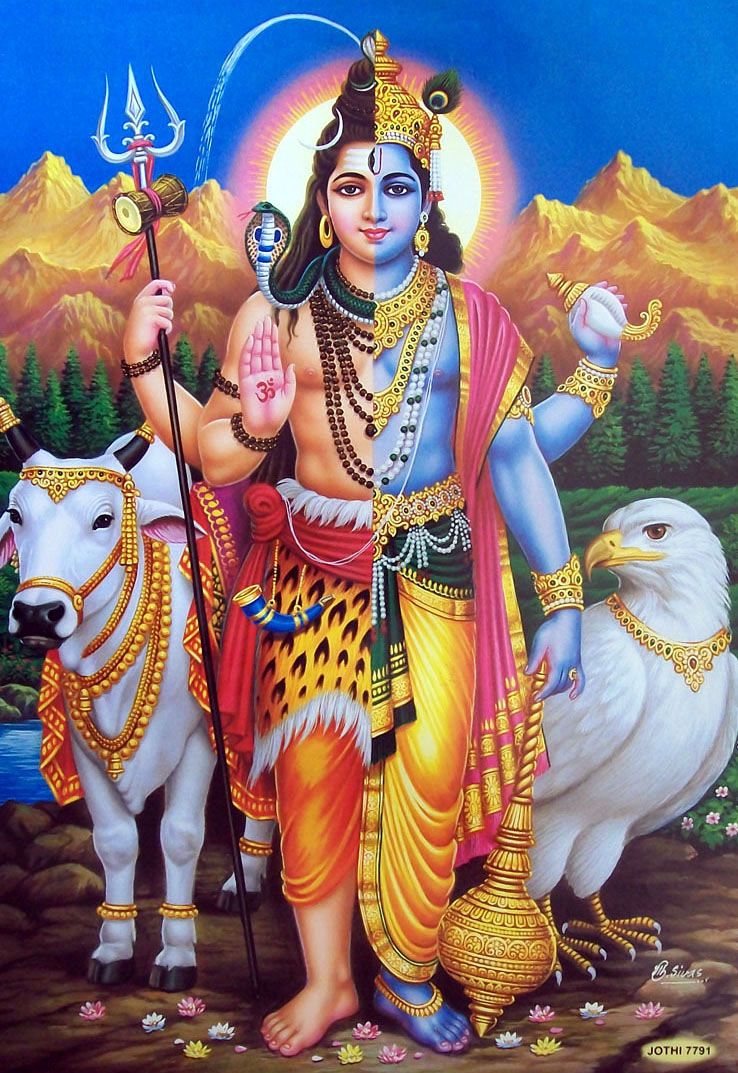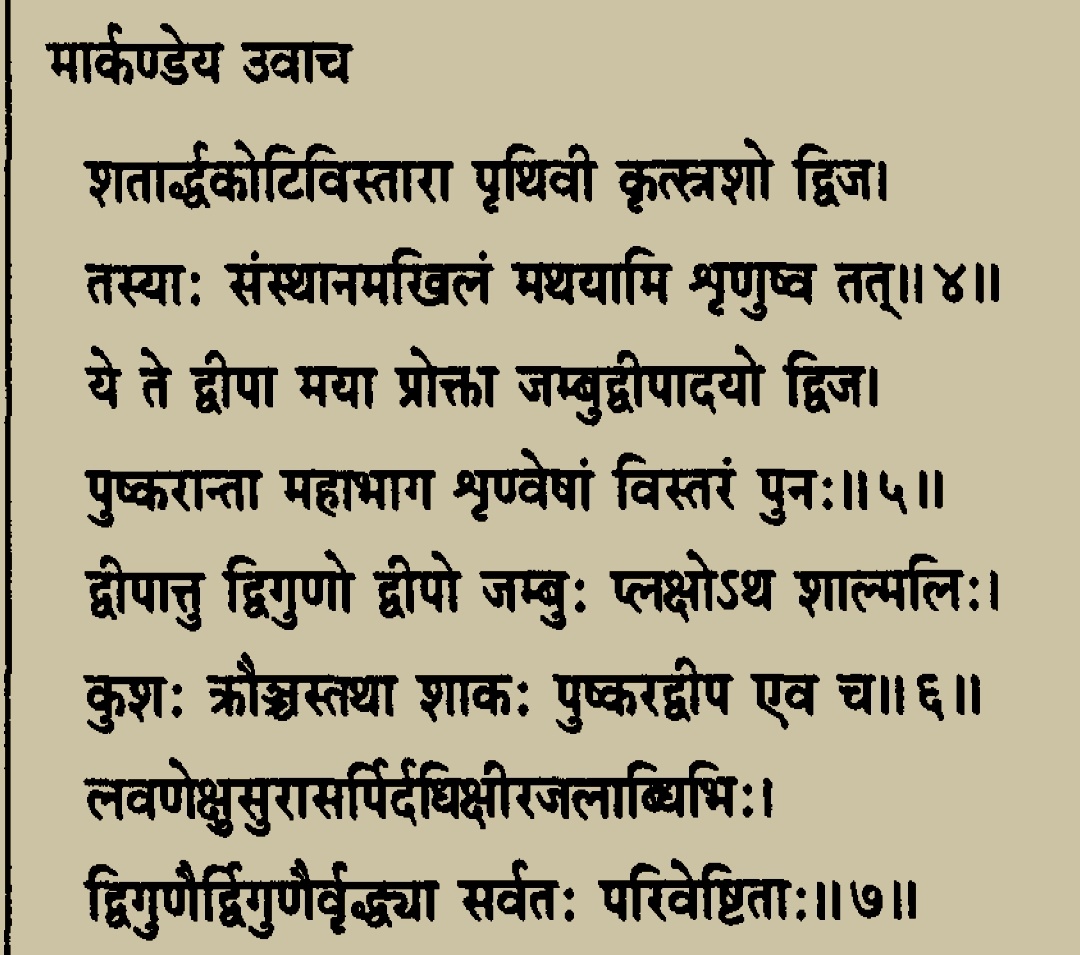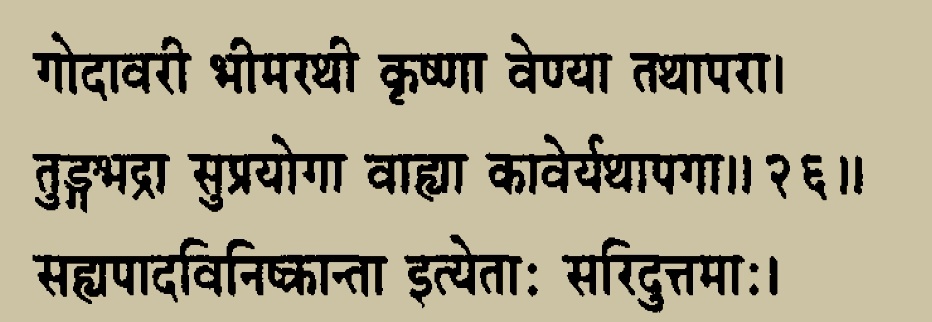 |
| Shankaranarayana |

Vishnu took a 1000 lotus flowers to perform the Sahasranama for Shiva (1 lotus for 1 name). In order to test Vishnu's devotion, Shiva secretly takes away 1 lotus before the worship. Nearing the end of the Sahasranama, Vishnu realizes he is short by 1 lotus. Vishnu wondered if the shortfall in the lotuses was due to a error in counting of the lotuses or error in reciting of the 1000 names. He concluded there has been no mistake in reciting the 1000 names. The mistake must've been the in counting the lotuses. Vishnu had resolved at the outset for a worship with a 1000 lotuses. "How shall Mahadeva be worshiped when lotuses are short by one. If I go to fetch one, I will have to break the rule of continuous sitting. Now what should be done?" Vishnu was worried with this thought.
Vishnu praised as Pundarikaksha by the Rishis i.e. the Lotus eyed one. In a stunning display of devotion, Shri Maha Vishnu proceeds to dislodge his own lotus shaped eye with his index finger & offers it to Shiva in place of the missing lotus.
Mahadeva moved by Maha Vishnu's gesture says there is no one in the 3 worlds that is as devoted to him as Vishnu is & declares him as the protector of the 3 worlds. Shiva also declares that those who worship him but not Maha Vishnu will certainly fall into Naraka.
Vishnu asks: "O Maheshvara, the duty of protecting the three worlds has been assigned to me. Daityas are very haughty. They have enormous strength. How can they be killed by me?"
To which Shiva answers : "This discus Sudarśana is capable of cutting down the great Daityas. It is given to you by me. O Lord Viṣṇu, accept this. Work a havoc among Daityas with this, O Lord." Shiva then hands the Sudarshana Chakra to Shri Maha Vishnu.
 |
| Shiva gifting the Sudarshana Chakra to Vishnu |
Now regarding the details of the Vrata. Lord Shiva says : "In the year named Hemalamba, on the 14th day in the bright half of the glorious month of Karttika at the time of dawn, on the Tithi pertaining to Mahadeva (i.e. the 14th one) in the Brahma Muhurta you (Vishnu) took your bath in Manikarnika after coming here from Vaikuntha. Then the Linga of Vishveshvara was worshipped with a thousand lotuses. Hence it will become a favourite of mine. It shall be famous in all the worlds as Vaikuntha Chaturdashi"
Shiva says: Vishnu worship should be performed by persons of all castes. They shall observe fast during the day & perform Vishnu's worship in the evening. Afterwards Shiva's worship is to be performed. Otherwise Shiva's worship shall be futile.
Lord Shiva gives more details regarding the Vrata (this is mainly centered around Punya Teerthas in Kashi). "After taking the bath in the evening in Pancanada (Panchaganga ghat), the devotee should worship Bindumadhava (original temple destroyed by barbarian aurangzeb).
He who takes his bath in Vishnukanchi shall worship Anantasena. Thereafter he shall take his bath in Rudrakanchi and worship Pranavesha.
First the devotee should take bath in Vaniteertha & then worship Narayana. Thereafter he should take bath in Retodaka & worship Kedaresha.
At the outset the devotee should take bath in Yamuna & worship Venimadhava. Then he should take bath in Ganga & worship Sangamesha.
This is the significance of Vaikunta Chaturdashi. This is followed by Kartika purnima. It is on Kartika purnima that Lord Shiva assumes the form of Tripurantakamurthi & slays evil asuras Tarakaksha, Vidyunmali & Kamalaksha (collectively known as Tripurasura)
Vaikunta Chaturdashi is the perfect occasion to chant the Vishnu Sahasranama followed by Shiva Sahasranama. The benefits to be had by performing them today increase by several manifolds. This is said by Lord Shiva himself.
References
Skandapuranam


























